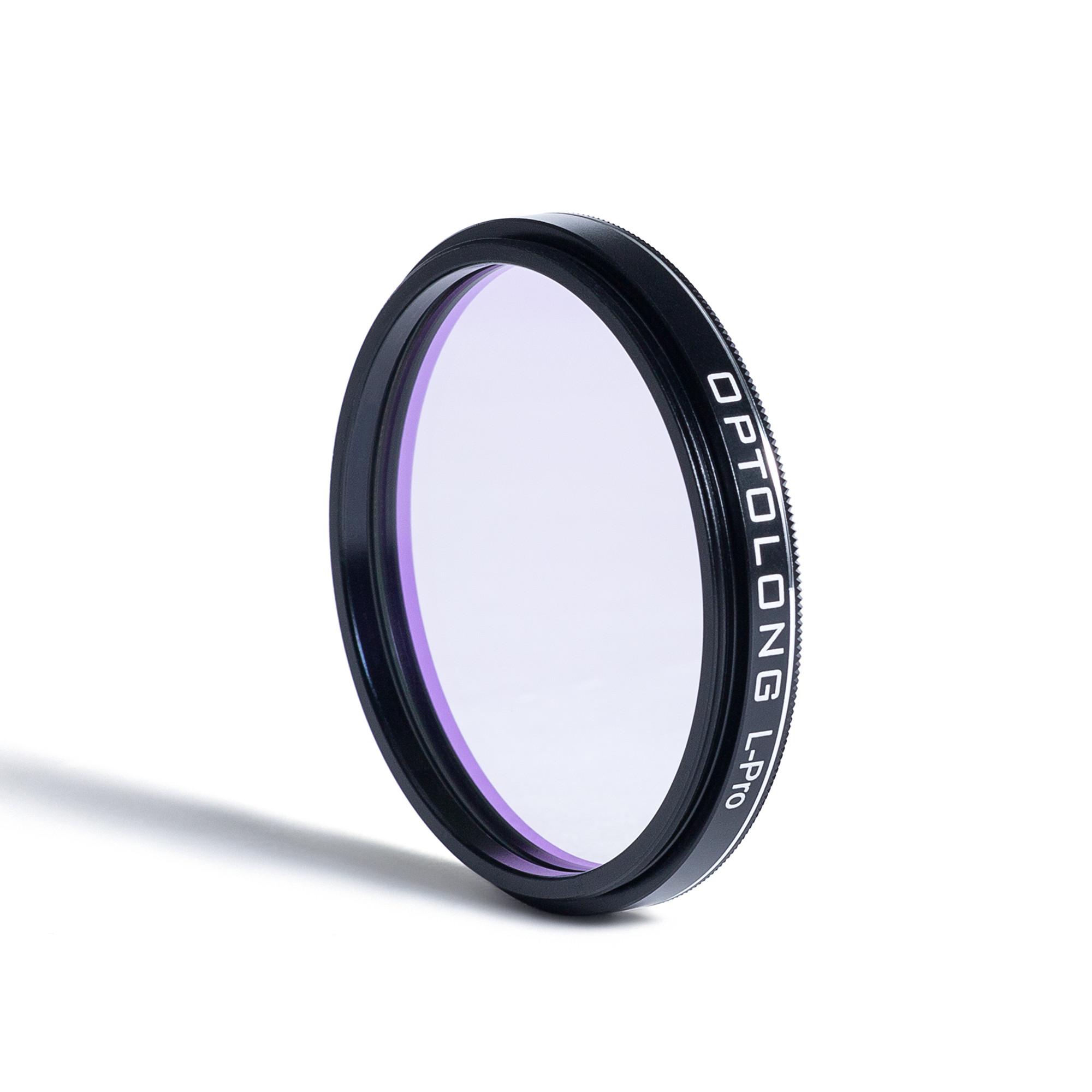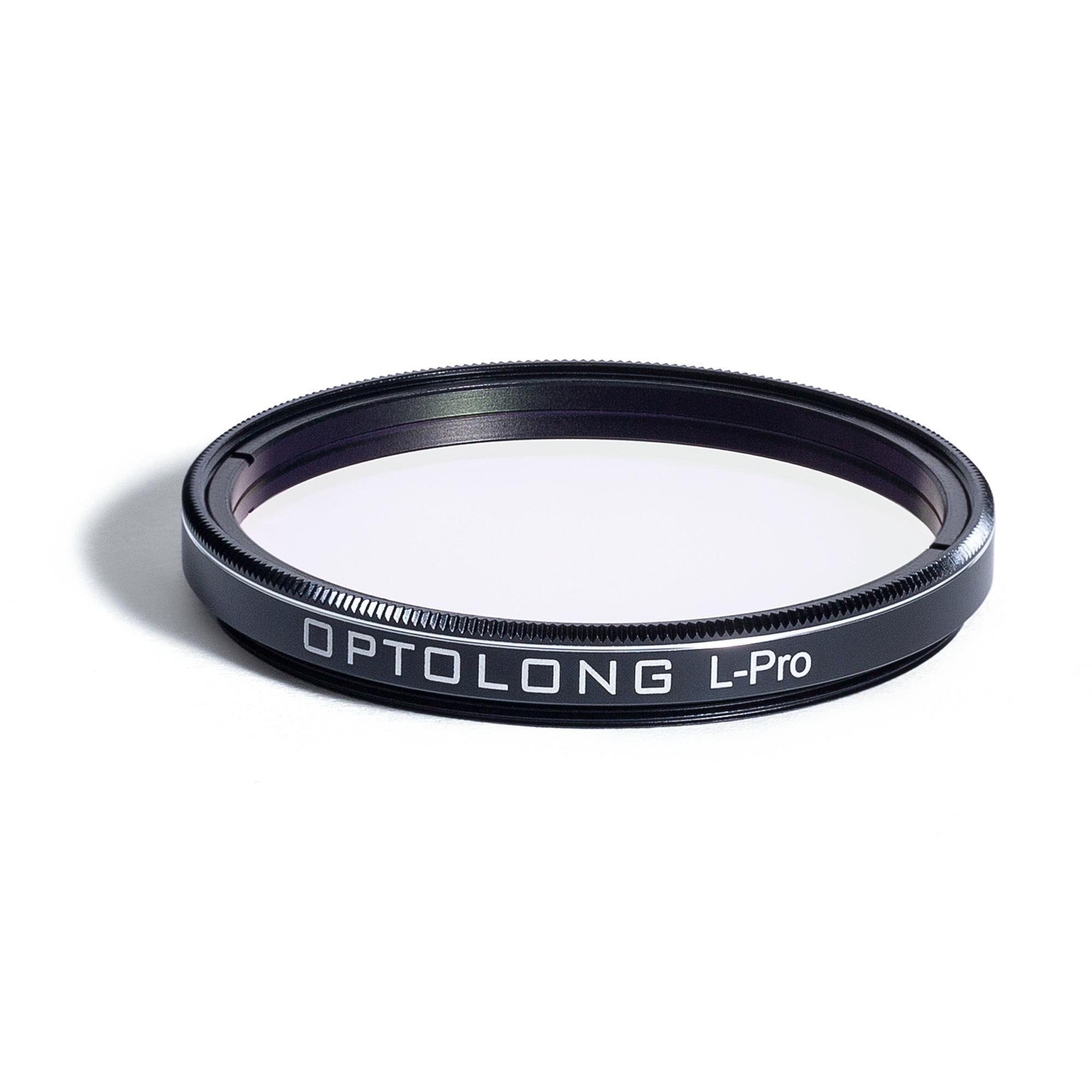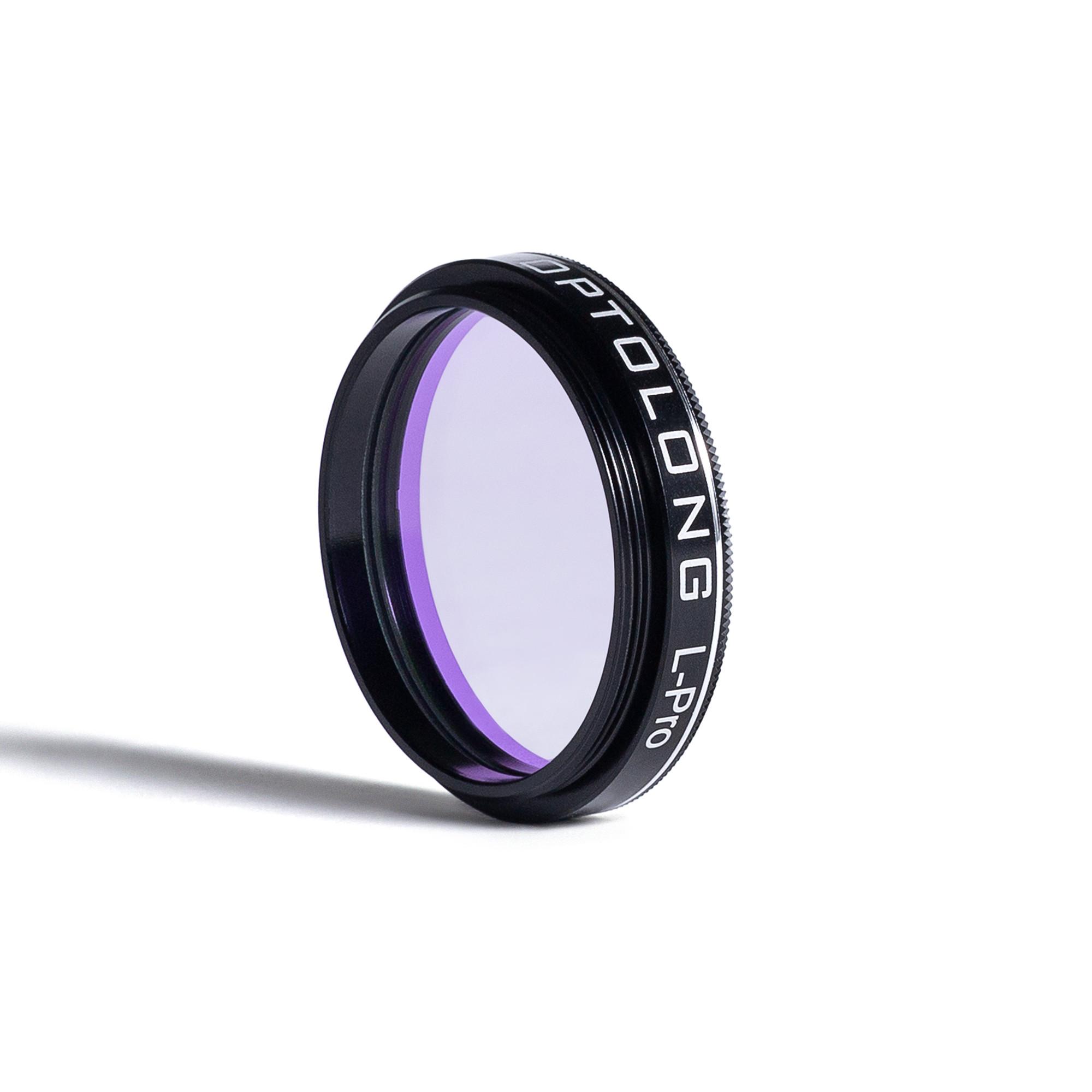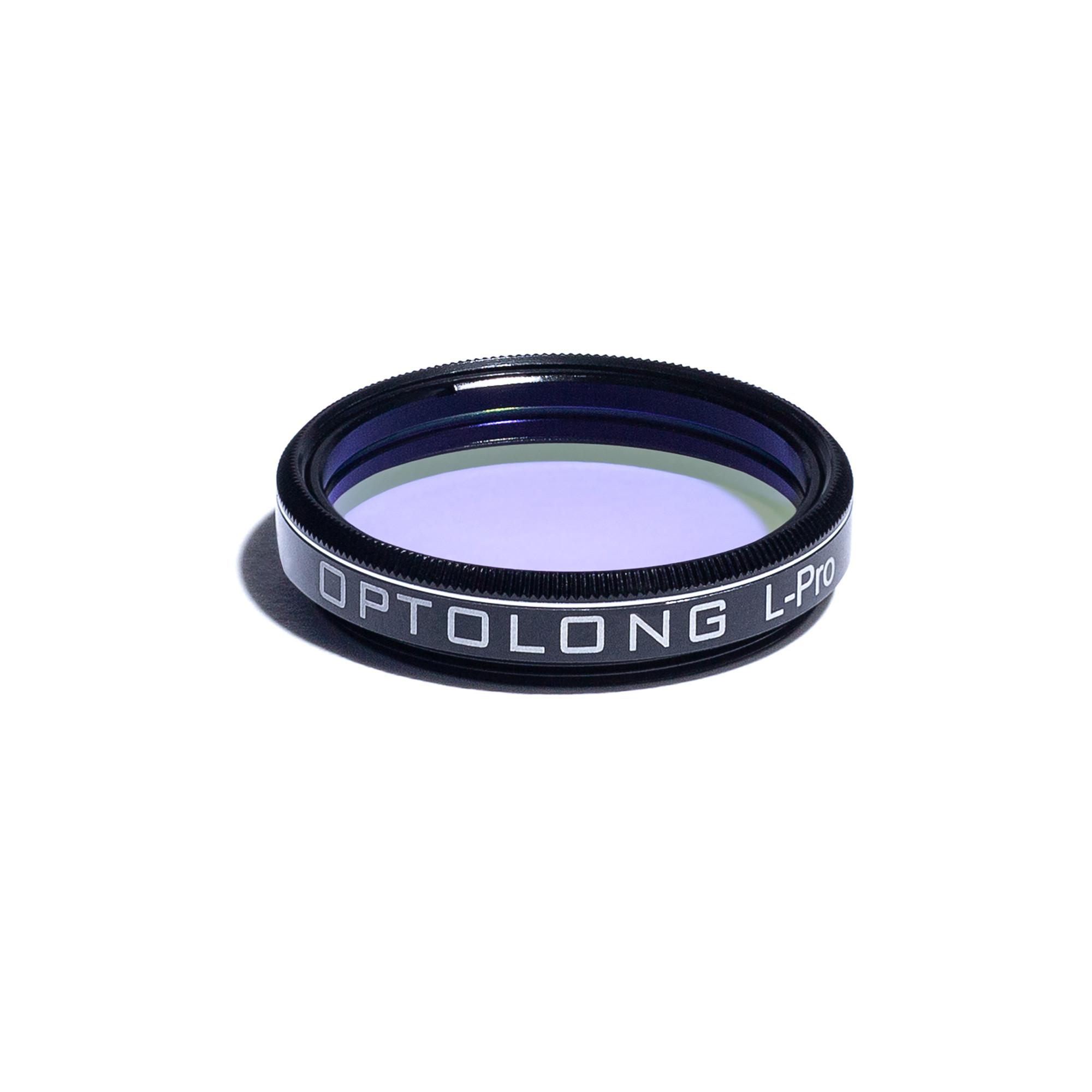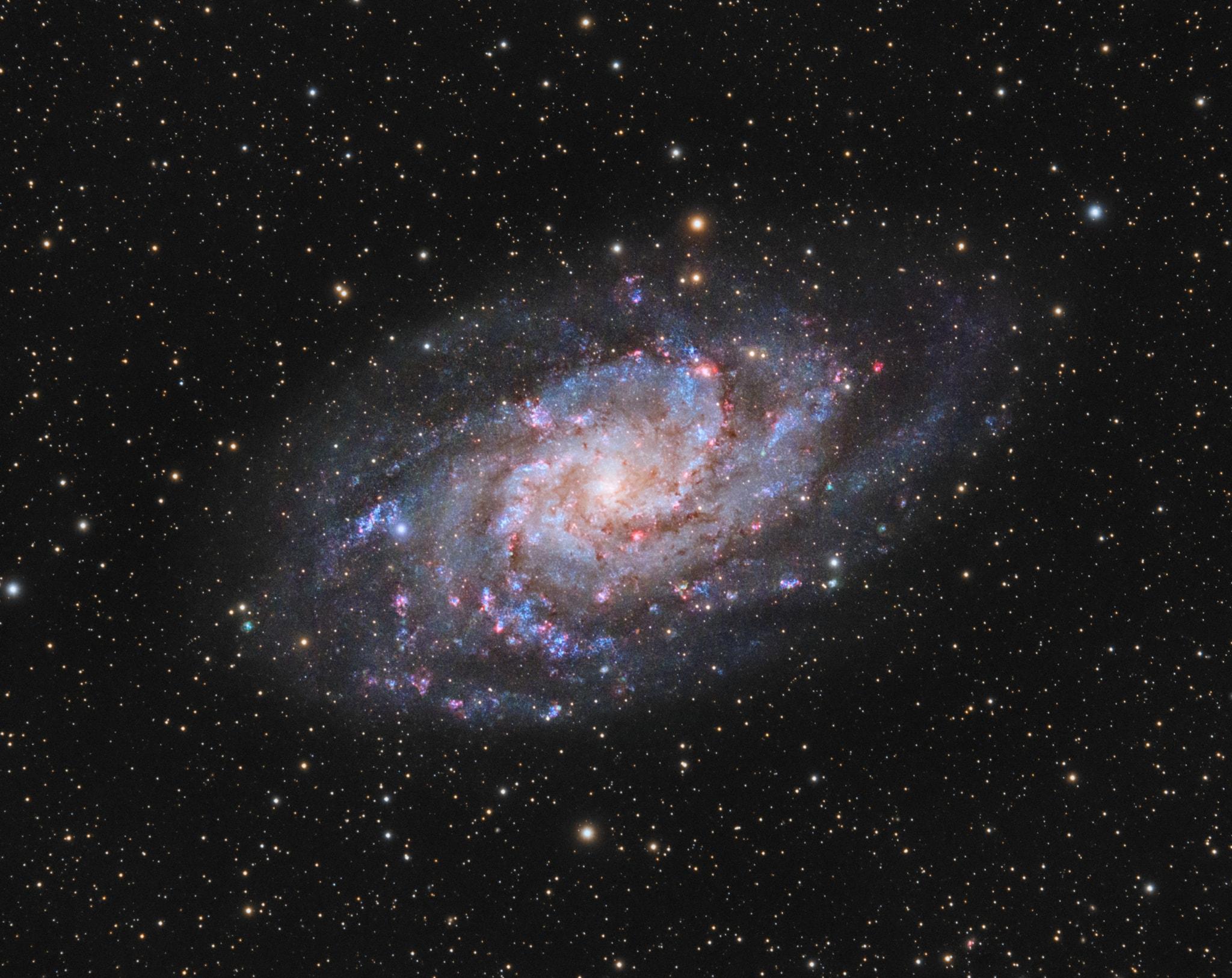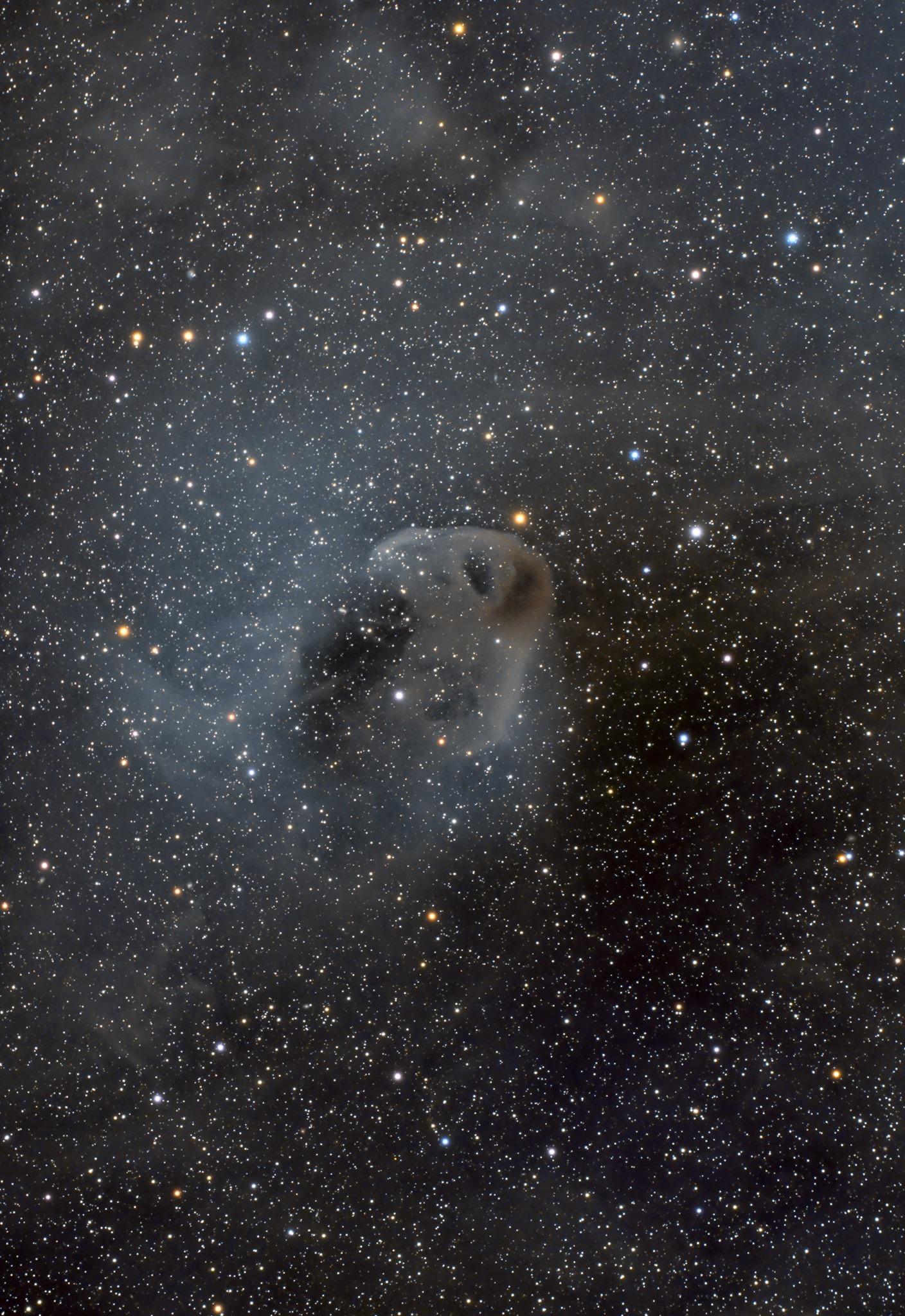-
Description
-
Specification
1. L-Pro Introduction
Optolong L-Pro (L-Professional) filter is designed to improve the visibility of various deepsky objects. By selectively reducing the transmission of wavelengths of light pollutants, specifically those produced by artificial lightings including mercury vapor lamps, both high & low pressure sodium vapor lights and the unwanted natural light caused by neutral oxygen emission in our atmosphere (i.e. skyglow). Together with the highly transparent in main nebula emission lines at OIII(496nm and 500nm), H-beta (486nm), NII(654nm and 658nm), H-alpha(656nm) as well as SII(672nm), the filter is suitable for enhancing the contrast and details for both visual and photograghic purpose at sub-rural area with heavy light pollution.
Optolong L-Pro is multi-bandpass filter which offers better color balance by maximizing the transmission band. The balanced transmission allows astrophotos to be taken with minimal color cast to broadband emission objects such as galaxies, reflection nebulae and globular star clusters. L-Pro is the best choice for light pollution suppression.
Main Use and Performance
Suitable for visual observation and astrophotography.
L-Pro filter has a very low transmission reduction rate against continuous spectrum space objects, and thus is quite effective in suppressing light pollution sources when shooting galaxies, reflection nebulae and globular star clusters. The same holds true for visual star observations.
L-Pro filter alone can suppress infrared wavelength, and thus can be used at ease for “L” image shootings with CCDs.
Light pollution filter do not eliminate the effects of light pollution or increase the object’s brightness. In many cases, they increase the contrast between nebula and night sky, not brightening the nebula.
WARNING: The filters of Optolong are not designed for sun observation. DO NOT LOOK AT THE SUN WITH OPTOLONG FILTER. You would be BLIND if you fail to observe the warning.
Technical Data
-
Optical glass fine material
-
Spectrum: 380-750nm
-
Surface Quality: 60/40 (Refer to MIL-O-13830)
-
Fine-optically polished to ensure accurate 1/4 wavefront and < 30 seconds parallelism over the both surfaces
-
High transmission at major nebula emission lines (i.e. H-alpha 656nm, OIII 496nm&500nm, SII 672nm and H-beta 486nm).
-
Precision off-band blocking, specifically the major emission lines of artificial light pollution (i.e. Na 589nm, Hg 435nm and 578nm).
2. L-Pro Spectrum
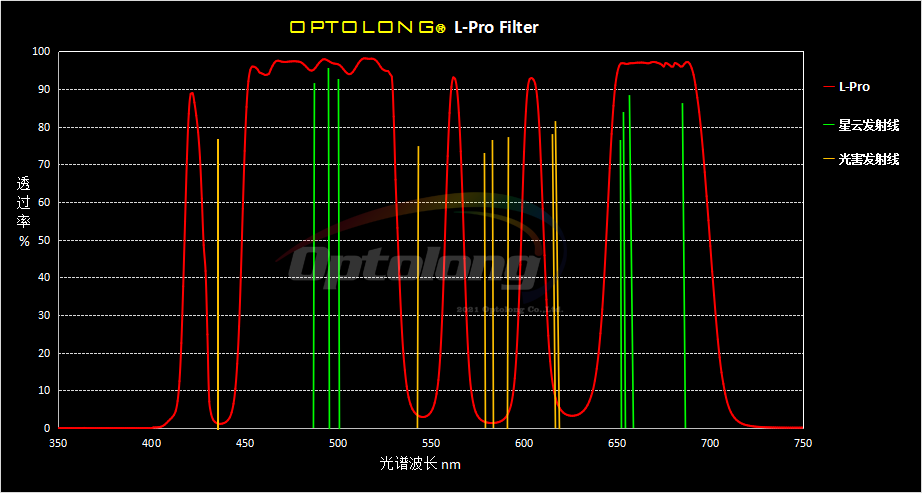
※This curve is only for reference, and is not used as the final product data.
How to read the chart?
▲The horizontal axis is the Wavelength in Nanometers(nm).
▲The vertical axis is transmission in %.
▲The RED line shows the transmission of the filter. The artifical emission lines are shown in ORANGE. And the emission lines from constellation are shown in GREEN.

3. Coating Technology
·Multi-layers anti-reflection coating
·Non-cementing optical substrate coating
·Optolong filter adopts precision coating based on Ion-assisted deposition coating technology for durability and resistance to scratching, as well as stability on CWL(central wavelength) no deviation affected by temperature change.
·Planetary rotation system offers precision and homogeneity of coatings ensuring high value on transmission of pass-band and Optical density of off-band.
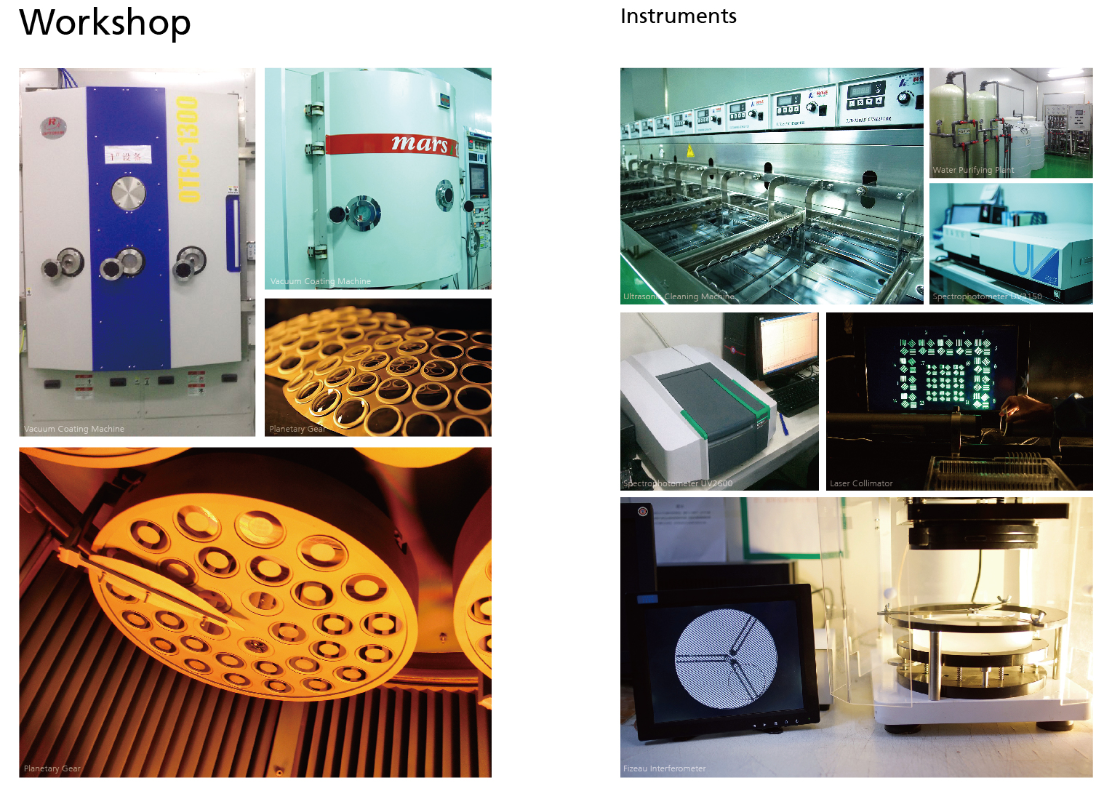
4. Gloable Price
| L-Pro Gloable MAP | Unit Price in USD dollars |
| 1.25"(1 1/4" mounted) | $149.00 |
| 2" mounted | $199.00 |
| M77 mounted | $289.00 |
| EOS-C clip | $249.00 |
| EOS-FF clip | $269.00 |
| NK-FF clip | $269.00 |
| Sony-FF clip | $269.00 |
5.Package

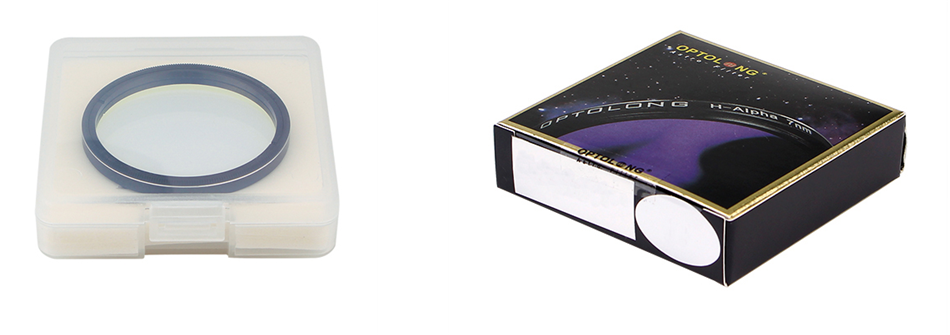
2019 NEW package
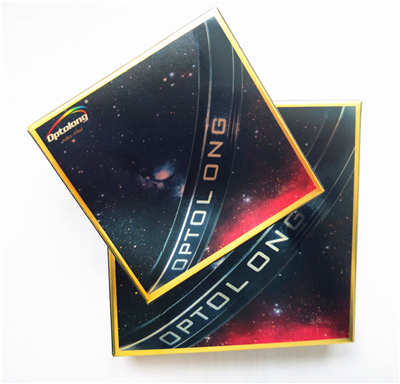
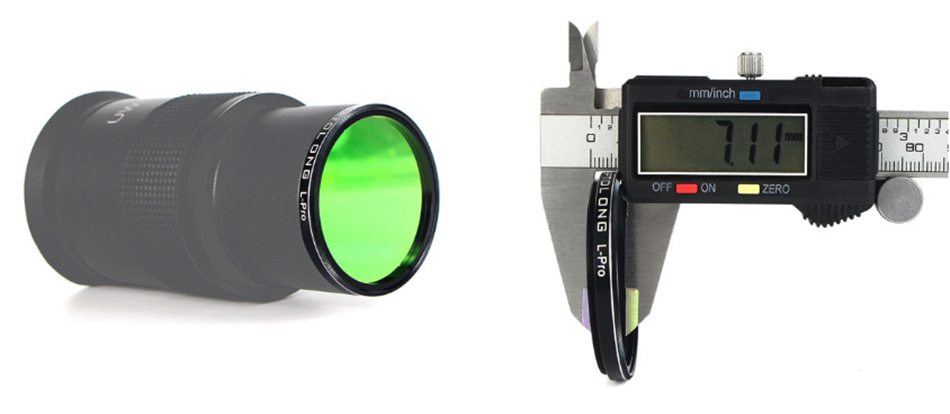
6. Optolong L-Pro Performance
I Comparason image was shot by Arnaud Besancon
All the pictures have been realised with 5D3 Astrodon modded and Samyang 24mm F1,4 at F2, 13s exp. time,3600 isos.
All the pictures are raw,without post-process
.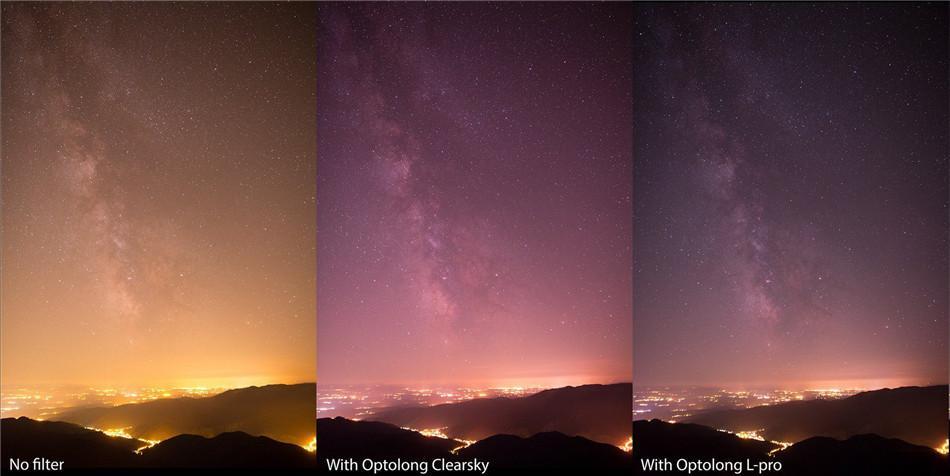
II The Vortex galaxy © Luca Fornaciari Astrophotography
Optolong Astronomy Filter L-Pro 2''
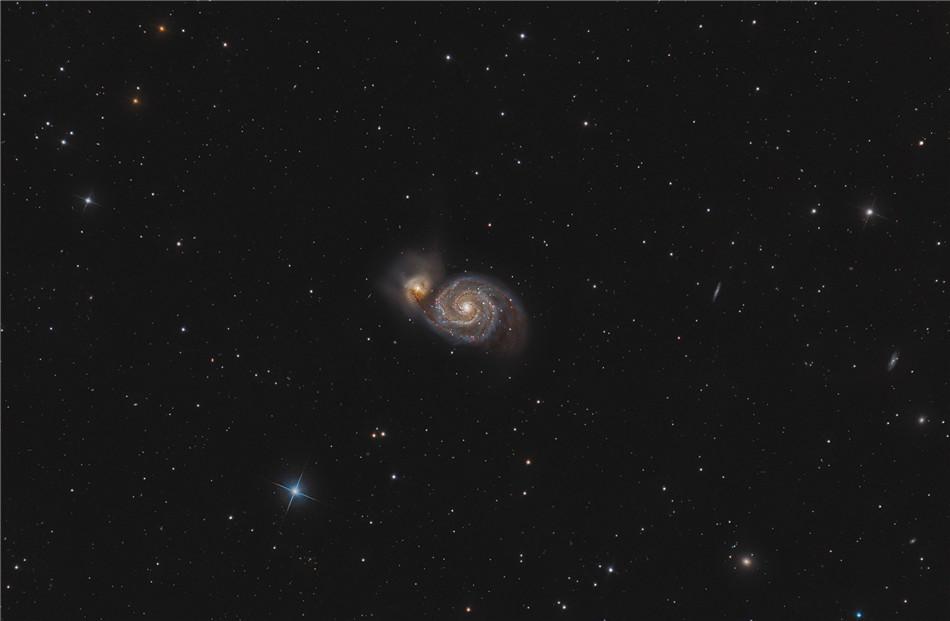
III Ran into Red Sprite again©Vincent Cheng
The Red Sprite is a TLEs (Transient Luminous Events) from the atmosphere, and is part of a family of small creatures that also include even harder to photograph, from rogue sprites to blue jets.
by Optolong_filter 2" L-Pro filter
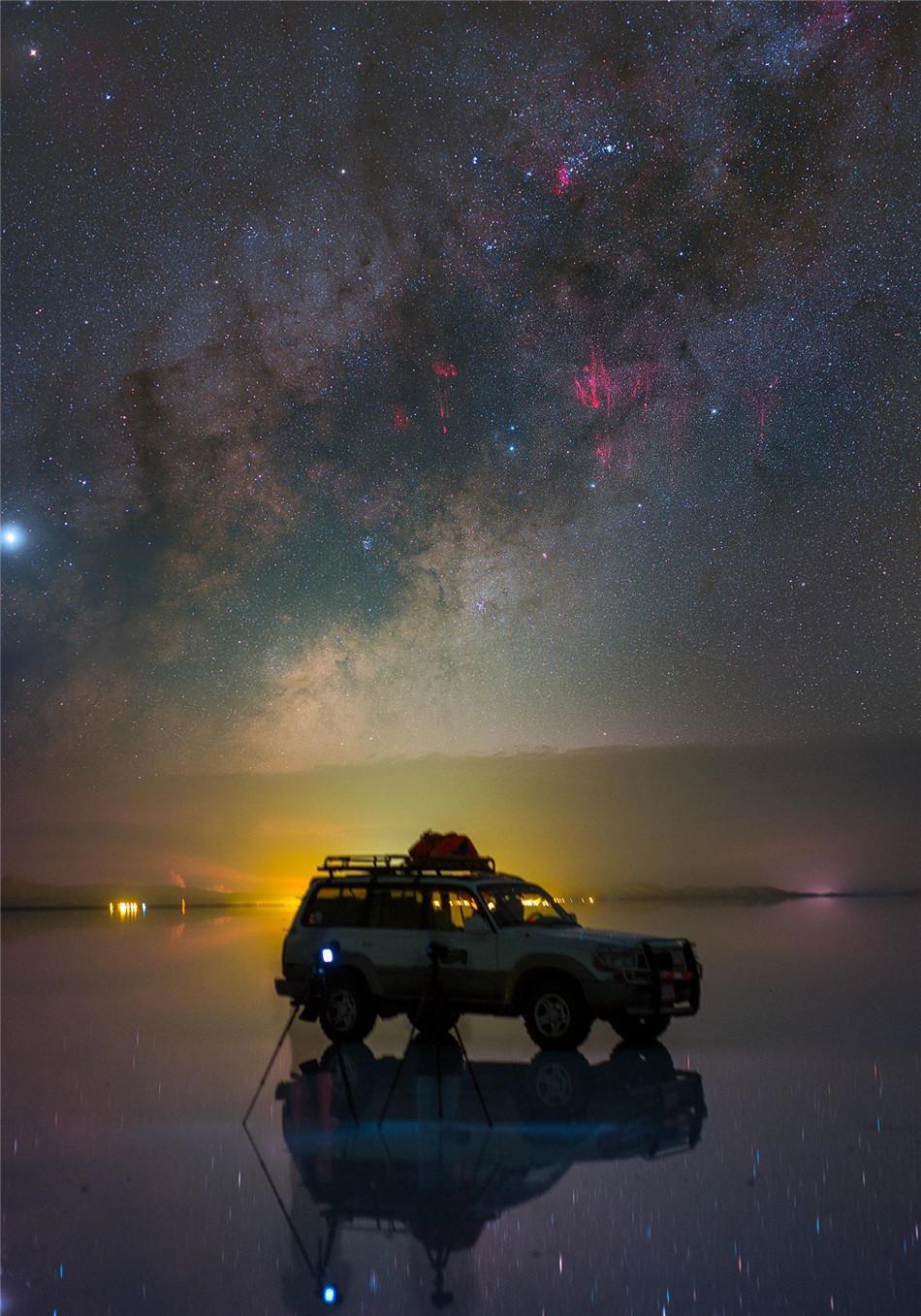
Ⅳ When the skies were absolutely STEADY, Jim Mayercak shot this Luna
cannot recall EVER having such good "seeing" conditions. The most beautiful Lunar shot to date.Celestron CGEM DX 1100 EDGE HD ZWO ASI071PRO
Optolong L-Pro filter
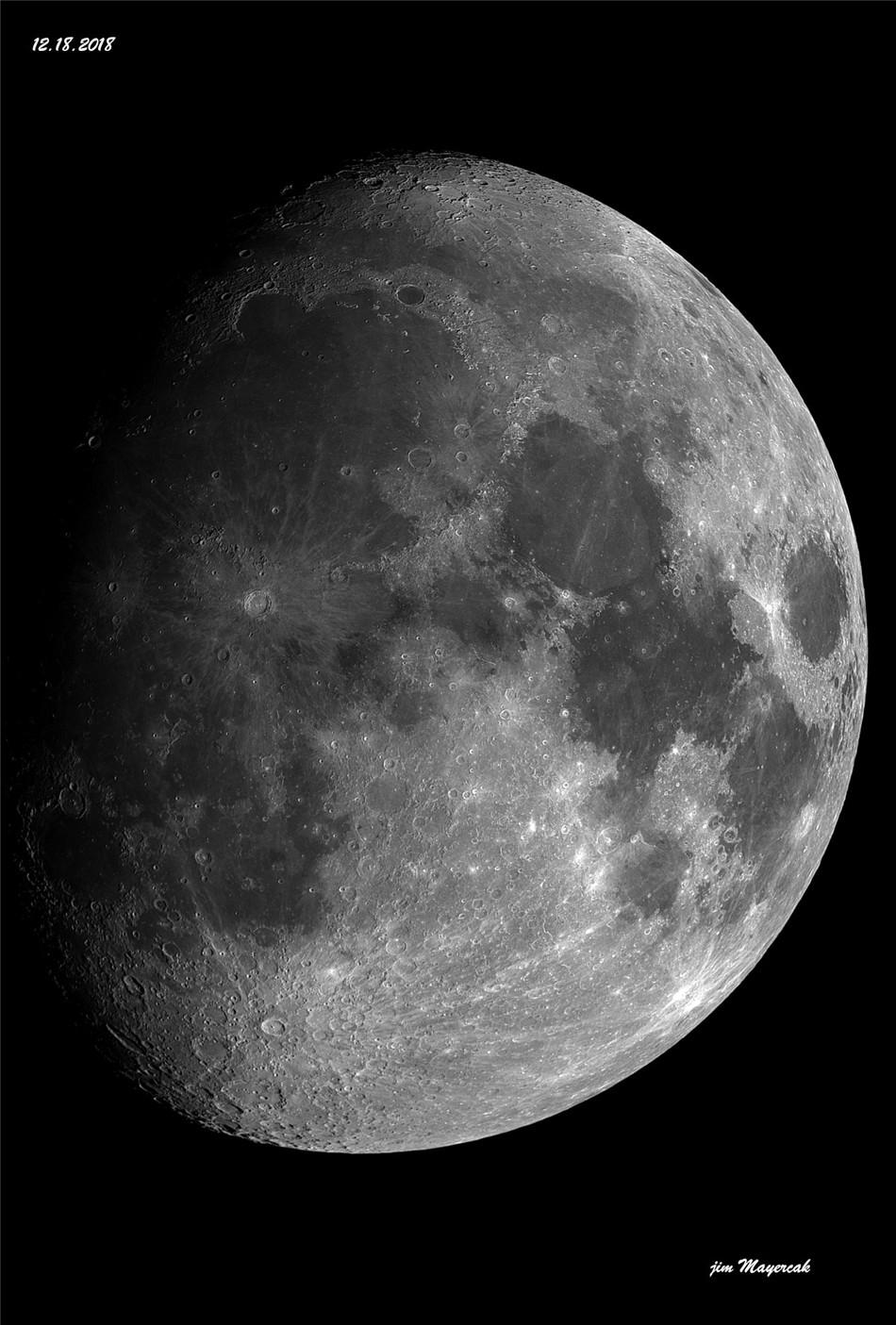
V Here the final Image of comet 46/P Wirtanen and the Pleiades © Blake Estes.
This imaging run ended up being a marathon that took about 22 hours of processing, using Optolong L-Pro filter for imaging. Its absolutely perfect!
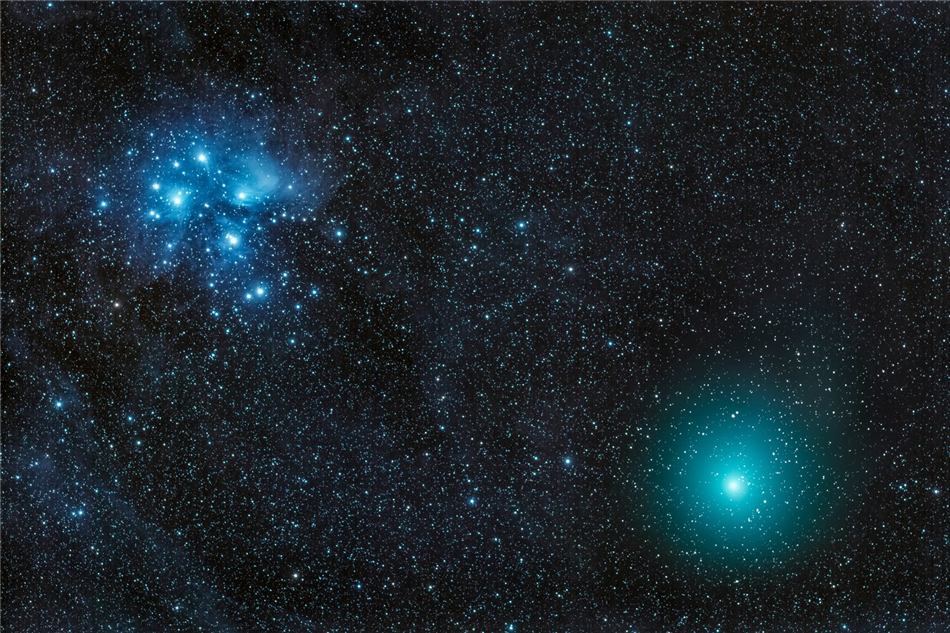
Ⅵ. Veil Nebula © Andrea Andreotto Maggi with Optolong L-Pro filter 2''
The L-Pro filter filter allowed me to obtain long poses without saturating the stars and to obtain a good separation between the nebula and the sky background while keeping the colors unaltered.
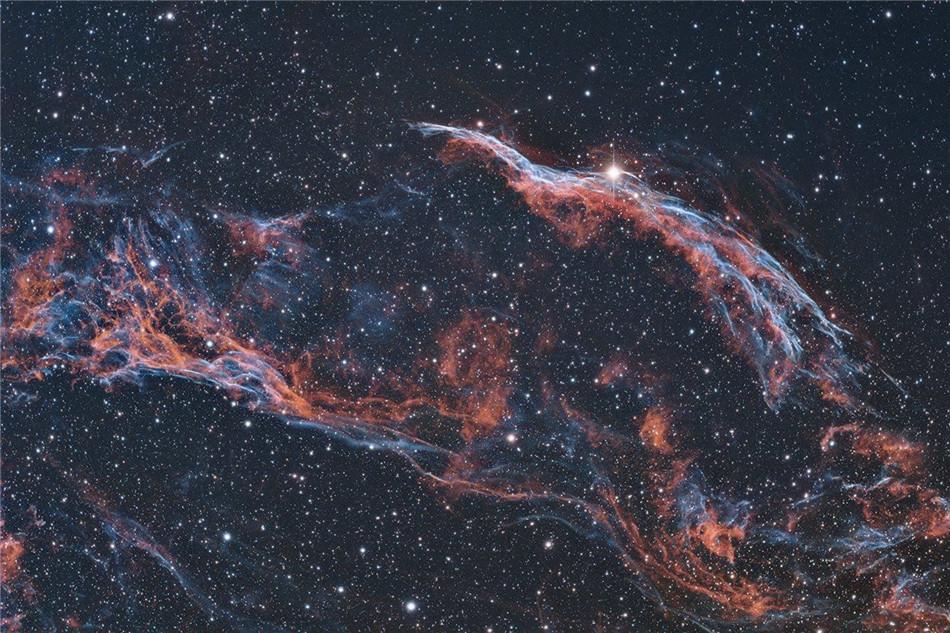
VII. M33, © Valerio Avitabile(Italy)
Tecnosky apo 102/714 ridotto a 585mm
EQ6-R mount
Asi294 pro raffreddata a -10°
Guida con Artesky 60/240 e Asi224mc
85x300sec gain120 con filtro Optolong L-Pro 2"
41 Dark ,35 flat, 25 darkflat
Astro photography tools, Phd2 Guiding, eqmod, PixInsight 1.8 e photoshop
Ⅷ. LBN 777 © Samara Nagle
This is LBN 777, also known as Vulture Head or Eaglet Nebula. Very close from the famous Pleiades, which bright reflection cloud is part of the Taurus Molecular Cloud as well. These giant molecular clouds consist of cosmic dust and molecular gas, with an average density of 100-1000 particles per cubic centimeter. These clouds are dark, not very dense and cold as well. The clouds can loose their gravitational balance quite easy due to some gravitational impact. That time their material can condense forming into small dense parts, called bok globules. These globules keep getting more and more dense with increasing temperature, therefore new stars - and their planets - born from their material.
The Eaglet Nebula is very faint, so it can be observed only by taking long exposure photographs.
Images from November 7 and 8
Mach1 GTO
Celestron Edge 11"
Hyperstar 4
ASI 2600 MC Pro
Optolong L-Pro filter
100x300 sec exposures
Processed in PixInsight, minor touch-ups in Photoshop CS5
Warm prompt
●About color: due to the influence of ambient light, color difference of the display and flash photography, the color of the product may have some color difference. Detailed color is in accordana with the final product.
●About coating: the interference filter will show different colors under different light, which is a normal phenomenon. Please refer to the material object.
●About the style: in order to improve the product, the change of design/appearance/parameters has not been updated in time. Please see the subject produce.
●About the description: the series of this product have the same material, technology and design, different sizes only, please note.
Optolong L-Pro features:
★1.25"(1 1/4" mounted), 2" mounted for eyepiece
★Round 77mm, 82mm mounted to screw on the objective lens
★SLR Camera clip filters: EOS-C, EOS-FF, NK-FF, Sony-FF

